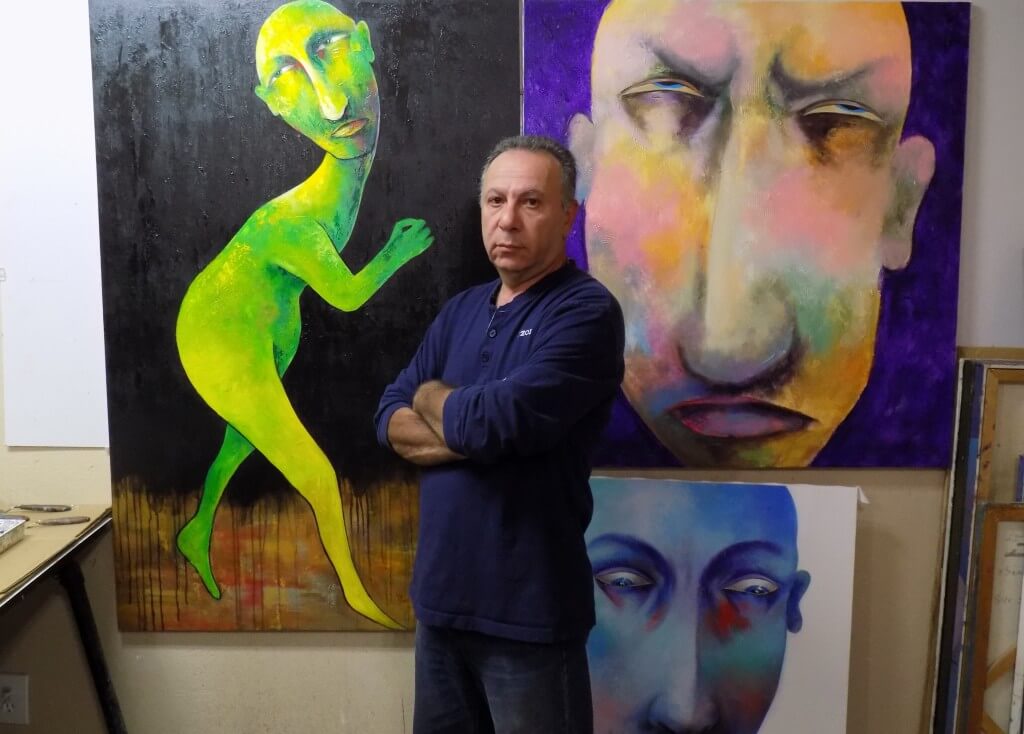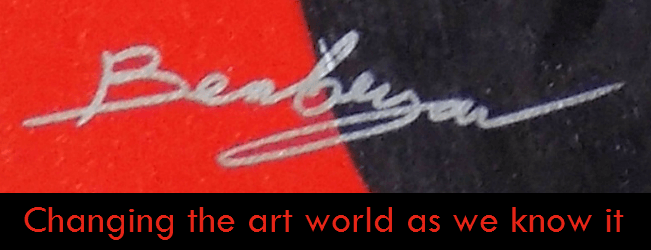
Growing up in Soviet Armenia, Arbe received recognition for his talent very early in life. The son of a well-known artist, and Professor of Art & Design, Ara Berberyan had his first Exhibition at the age of twelve. His paintings were sent by the U.S.S.R. on an International Tour, called “The World by Childrens’ Eyes.” This Exhibition visited France, Italy, Canada and the United States.
Of the 65 paintings Arbe showed between 1970 and 1972 only four returned to Armenia, the rest were sold or placed on permanent exhibition in State Buildings throughout the Soviet Union.
Later, Arbe was invited to matriculate at the University of Art & Design in Yerevan, Armenia. Although it was difficult to locate books from the west, Arbe managed to obtain and study those of the artists he loved most : Dali, Picasso, Titian , Rembrandt, and Klimt. As a student of art & design books on Klimt especially inspired him.
He graduated with a Masters Degree in 1981 and promptly began his career as a fine artist by accepting government commissions for murals at the Yerevan Airport, theatres, hotels and other government projects.
In the Soviet Union one was fortunate to have regular work of any kind. Young Arbe was always busy. After graduating from the University he was employed in an Architectural Office, “Gostproect”, where he was asked to design facades for public buildings and office complexes. Here again, the ornamental gold designs and marbleized patterns of Gustav Klimt heavily influenced Arbe’s creations.
When he was not painting for the State, he was working on commissions for private citizens or Government officials. He would paint anything: classical portraits, landscapes, cubism, surrealism, murals and even signs.
“Private clients expressed their appreciation for my work”, he recalls, “and this was much more encouraging and satisfying than painting for any Institution.”
Although his fellow artists were enamored by the surrealists, Arbe preferred to express the beauty he saw everywhere in life. Violins and guitars are often his subjects, but he rarely paints men. Arbe says that women represent beauty and kindness to him, and so he began to focus on the female figure as the primary subject and object in his paintings.
“Women have a mystique and a vulnerability that I see,” he says. “They are fragile, yet strong. Where there is a man on my canvas, he’s going to be in harmony with the women. This is how things should be ”
In 1984 Arbe, age 26, immigrated to the United States, joining his sister who had already settled in Los Angeles. He found work with his hands, wherever he could, first as a painter, a carpenter, and then as a graphic artist for the local newspaper. “My mentality as an artist changed when I came to this country, “ says Arbe. “With more freedom I think differently. I feel differently.’
Here he met and married his wife Nazik, also from Armenia. They have two children.
Before long Arbe began to show his paintings in California, and he soon found clients understood and enjoyed his style. “I am lucky to be able to do what I love”, he says. “Americans are sophisticated complex people. They buy because they like the art, and that’s a great feeling for me.”
“When I sketch, I do it loosely without intent or design. I sit and listen to music —Mozart, Verdi, Bach. I sketch on paper, not on the canvas, and then as it changes and takes shape, I will begin to work the canvas. Sometimes I like working on just one canvas, start to finish. It is a process, when I am all involved in it, time does not exist. Other times, my mood changes and so I move to another, and start a new painting. Later I can come back to it when the mood returns.”
Arbe’s originals are primarily oil on canvas, but he also incorporates a variety of other media into his work, creating a metallic texture in the abstract backgrounds of many of his paintings. He applies gold leaf, and sometimes silver leaf, and then works it with his tools and his hands into intricate patterns and textures that give his art a third dimension. His palette is full of earth tones, with an occasional flourish of vibrant reds, blues, purple or lavender. But always, grabbing your attention, is the gold — rich and luxuriously applied by hand and worked into delicate patterns representing the intricacies of life.
The effect he achieves is a mixture of classical and modern. Klimt is still clearly visible in the backgrounds of paintings like “Sweet Whispers”, “Proud Sister” or “In Thought”. Others, reach back into his Armenian history and are influenced by biblical themes, legends and iconography. Taken together, Arbe’s greatly varied body of work is filled with romance and drama, music and love. It is soothing and compelling, exciting and peaceful all at the same time.
“I wish we could all live in harmony,” says the artist. “I know it sounds simple, but finding a good balance between the laughter and the angst we all experience, this is what is important in life, and what I try to capture in my art.”
